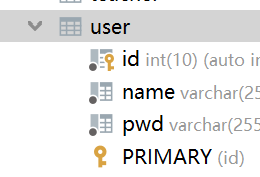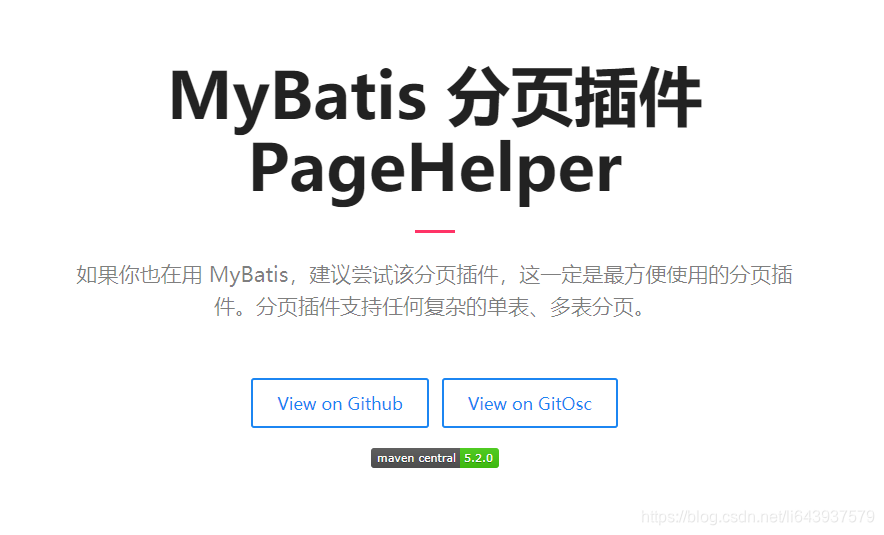搭建环境
搭建数据库
URL配置:jdbc:mysql://localhost:3306/dbschool?useSSL=false&serverTimezone=Hongkong&characterEncoding=utf-8&autoReconnect=true

新建项目
- 新建一个普通maven项目(父项目,以后都在里面创建子项目)
- 删除src目录
- 配置pom.xml
<!--导入依赖-->
<dependencies>
<!--mysql驱动-->
<dependency>
<groupId>mysql</groupId>
<artifactId>mysql-connector-java</artifactId>
<version>5.1.47</version>
</dependency>
<!--mybatis-->
<dependency>
<groupId>org.mybatis</groupId>
<artifactId>mybatis</artifactId>
<version>3.5.2</version>
</dependency>
<!--junit-->
<dependency>
<groupId>junit</groupId>
<artifactId>junit</artifactId>
<version>4.12</version>
</dependency>
</dependencies>
<build>
<resources>
<resource>
<directory>src/main/resources</directory>
<includes>
<include>**/*.properties</include>
<include>**/*.xml</include>
</includes>
<filtering>true</filtering>
</resource>
<resource>
<directory>src/main/java</directory>
<includes>
<include>**/*.properties</include>
<include>**/*.xml</include>
</includes>
<filtering>true</filtering>
</resource>
</resources>
<plugins>
<plugin>
<groupId>org.apache.maven.plugins</groupId>
<artifactId>maven-compiler-plugin</artifactId>
<configuration>
<source>11</source>
<target>11</target>
</configuration>
</plugin>
</plugins>
</build>
创建一个模块Module(子项目)
编写mybatis-config.xml,放在resoures下
此处设useSSL=false。
<configuration>
<environments default="development">
<environment id="development">
<transactionManager type="JDBC"/>
<dataSource type="POOLED">
<property name="driver" value="com.mysql.jdbc.Driver"/>
<property name="url" value="jdbc:mysql://localhost:3306/dbschool?useSSL=false&useUnicode=false&serverTimezone=UTC&characterEncoding=utf-8"/>
<property name="username" value="root"/>
<property name="password" value="123456"/>
</dataSource>
</environment>
</environments>
<mappers>
<mapper resource="com/dian/dao/UserMapper.xml"/>
</mappers>
</configuration>编写MybatisUtils
package com.dian.utils;
//sqlSessionFactory-->sqlSession
import org.apache.ibatis.io.Resources;
import org.apache.ibatis.session.SqlSession;
import org.apache.ibatis.session.SqlSessionFactory;
import org.apache.ibatis.session.SqlSessionFactoryBuilder;
import java.io.IOException;
import java.io.InputStream;
//SqlSessionFactory -->SqlSession
public class MybatisUtils {
private static SqlSessionFactory sqlSessionFactory;
static {
try {
//使用Mybaties第一步:获取sqlSessionFactory对象
String resource = "mybatis-config.xml";
InputStream inputStream = Resources.getResourceAsStream(resource);
sqlSessionFactory = new SqlSessionFactoryBuilder().build(inputStream);
} catch (Exception e) {
e.printStackTrace();
}
}
//既然有了 SqlSessionFactory,顾名思义,我们可以从中获得 SqlSession 的实例。
// SqlSession 提供了在数据库执行 SQL 命令所需的所有方法。你可以通过 SqlSession 实例来直接执行已映射的 SQL 语句。
public static SqlSession getSqlSession(){
// SqlSession sqlSession = sqlSessionFactory.openSession();
// return sqlSession;
return sqlSessionFactory.openSession();
}
}
CRUD
- id:就是对应的namespace中的方法名;
- resultType:Sql语句执行的返回值!
- parameterType:参数类型!
注意点:增删改需要提交事务!(sqlSession.commit();)
namespace
namespace中的包名要和Dao/Mapper接口的包名一致!
select
1.编写接口
//根据id查询用户
User getUserById(int id);2.编写对应的mapper中的sql语句
<select id="getUserById" parameterType="int" resultType="com.dian.pojo.User">
select * from dbschool.user where id=#{id};
</select>3.测试
@Test
public void getUserById(){
SqlSession sqlSession = MybatisUtils.getSqlSession();
UserMapper mapper = sqlSession.getMapper(UserMapper.class);
User user = mapper.getUserById(1);
System.out.println(user);
sqlSession.close();
}Insert
<insert id="addUser" parameterType="com.dian.pojo.User">
insert into dbschool.user(id,name,pwd) values (#{id},#{name},#{pwd});
</insert>@Test
public void addUser(){
SqlSession sqlSession = MybatisUtils.getSqlSession();
UserMapper mapper = sqlSession.getMapper(UserMapper.class);
int res = mapper.addUser(new User(7, "罗纳尔多", "9"));
if (res>0){
System.out.println("插入成功!");
}
//提交事务
sqlSession.commit();
sqlSession.close();
}Update
<update id="updateUser" parameterType="com.dian.pojo.User">
update dbschool.user set name=#{name},pwd=#{pwd} where id=#{id};
</update>@Test
public void updateUser(){
SqlSession sqlSession = MybatisUtils.getSqlSession();
UserMapper mapper = sqlSession.getMapper(UserMapper.class);
mapper.updateUser(new User(4,"齐达内","10"));
sqlSession.commit();
sqlSession.close();
}Delete
<delete id="deleteUser" parameterType="int">
delete from dbschool.user where id=#{id};
</delete>@Test
public void deleteUser(){
SqlSession sqlSession = MybatisUtils.getSqlSession();
UserMapper mapper = sqlSession.getMapper(UserMapper.class);
mapper.deleteUser(6);
sqlSession.commit();
sqlSession.close();
}万能Map
实体类,或者数据库中的表,字段或者参数过多,我们应当考虑使用Map!
//万能的Map
int addUser2(Map<String,Object> map);!--对象中的属性,可以直接取出来
传递map的key
-->
<insert id="addUser2" parameterType="map">
insert into dbschool.user (id,name,pwd) values (#{userid},#{username},#{password});
</insert>@Test
public void addUser2(){
SqlSession sqlSession = MybatisUtils.getSqlSession();
UserMapper mapper = sqlSession.getMapper(UserMapper.class);
Map<String,Object> map = new HashMap<String, Object>();
map.put("userid",10);
map.put("username","戈丁");
map.put("password","26");
mapper.addUser2(map);
sqlSession.commit();
sqlSession.close();
}配置解析
核心配置文件
mybatis-config.xml
configuration(配置)
properties(属性)
settings(设置)
typeAliases(类型别名)
typeHandlers(类型处理器)
objectFactory(对象工厂)
plugins(插件)
environments(环境配置)
environment(环境变量)
transactionManager(事务管理器)
dataSource(数据源)
databaseIdProvider(数据库厂商标识)
mappers(映射器)
环境配置(environments)
尽管可以配置多个环境,但每个SqlSessionFactory实例只能选择一种环境。
Mybatis默认的事务管理器就是JDBC,连接池:POOLED
<environments default="development">
<environment id="development">
<transactionManager type="JDBC"/>
<dataSource type="POOLED">
<property name="driver" value="com.mysql.jdbc.Driver"/>
<property name="url" value="jdbc:mysql://localhost:3306/dbschool?useSSL=false&useUnicode=false&serverTimezone=UTC&characterEncoding=utf-8"/>
<property name="username" value="root"/>
<property name="password" value="123456"/>
</dataSource>
</environment>
</environments>属性(properties)
通过properties属性来实现引用配置文件
- 可以直接引入外部文件
- 可以在其中增加一些属性配置
- 如果两个文件有同一个字段,优先使用外部配置文件的!
<!--引入外部配置文件-->
<properties resource="db.properties"/>db.properties
driver=com.mysql.jdbc.Driver
url=jdbc:mysql://localhost:3306/dbschool?useSSL=false&useUnicode=false&serverTimezone=UTC&characterEncoding=utf-8
username=root
password=123456类型别名(typeAliases)
- 存在的意义仅在于用来减少类完全限定名的冗余(意思就是可以给实体类起别名)
<!--可以给实体类起别名-->
<typeAliases>
<typeAlias type="com.dian.pojo.User" alias="User" />
</typeAliases>也可以指定一个包名
<typeAliases>
<package name="com.dian.pojo"/>
</typeAliases>在实体类比较少的时候,使用第一种方式。
如果实体类十分多,建议使用第二种。
第一种可以DIY别名,第二种则不行,如果非要改,需要在实体上增加注解
映射器(mappers)
【推荐使用】
<mappers>
<mapper resource="com/dian/dao/UserMapper.xml"/>
<!-- <mapper class="com.dian.dao.UserMapper"/>-->
</mappers>注意点:
- 接口和它的Mapper配置文件必须同名!
- 接口和它的Mapper配置文件必须在同一个包下!
解决属性名和字段名不一致的问题

public class User {
private int id;
private String name;
private String password;
}测试出现问题

解决方法:
-
起别名
<select id="getUserById" parameterType="int" resultType="user">
select id,name,pwd as password from mybatis.user where id = #{id}
</select>-
resultMap解决
结果集映射
- resultMap 元素是 MyBatis 中最重要最强大的元素。
id name pwd
id name password<!--结果集映射-->
<resultMap id="UserMap" type="User">
<!-- <result column="id" property="id"/>-->
<!-- <result column="name" property="name"/>-->
<result column="pwd" property="password"/>
</resultMap>
<select id="getUserById" resultMap="UserMap">
select*from dbschool.user where id=#{id};
</select>日志
日志工厂
SLF4J
LOG4J 【掌握】
LOG4J2
JDK_LOGGING
COMMONS_LOGGING
STDOUT_LOGGING【掌握】
NO_LOGGINGSTDOUT_LOGGING标准日志输出
在mybatis-config.xml核心配置文件中,配置我们的日志!
<settings>
<setting name="logImpl" value="STDOUT_LOGGING"/>
</settings>Log4j
- Log4j是Apache的一个开源项目,通过使用Log4j,我们可以控制日志信息输送的目的地是控制台、文件、GUI组件
- 我们也可以控制每一条日志的输出格式;
- 通过定义每一条日志信息的级别,我们能够更加细致地控制日志的生成过程。
- 可以通过一个配置文件来灵活地进行配置,而不需要修改应用的代码。
1.先在pom.xml文件中导入log4j的依赖包
<dependencies>
<!-- https://mvnrepository.com/artifact/log4j/log4j -->
<dependency>
<groupId>log4j</groupId>
<artifactId>log4j</artifactId>
<version>1.2.17</version>
</dependency>
</dependencies>2.在resources文件夹下建立log4j.properties文件进行配置
log4j.properties
#将等级为DEBUG的日志信息输出到console和file这两个目的地,console和file的定义在下面的代码
log4j.rootLogger = DEBUG,console ,file
#控制台输出的相关设置
log4j.appender.console = org.apache.log4j.ConsoleAppender
log4j.appender.console.Target = System.out
log4j.appender.console.Threshold = DEBUG
log4j.appender.console.layout = org.apache.log4j.PatternLayout
log4j.appender.console.layout.ConversionPattern = [%c]-%m%n
#文件输出的相关设置
log4j.appender.file = org.apache.log4j.RollingFileAppender
log4j.appender.file.File = ./log/dian.log
log4j.appender.file.MaxFileSize = 10mb
log4j.appender.file.Threshold = DEBUG
log4j.appender.file.layout = org.apache.log4j.PatternLayout
log4j.appender.file.layout.ConversionPattern = [%p][%d{yy-MM-dd}][%c]%m%n
#日志输出级别
log4j.logger.org.mybatis=DEBUG
log4j.logger.java.sql=DEBUG
log4j.logger.java.sql.Statement=DEBUG
log4j.logger.java.sql.ResultSet=DEBUG
log4j.logger.java.sql.PreparedStatement=DEBUG3.在mybatis-config.xml核心配置文件中,配置log4j为日志的实现!
<!--标准的日志工厂实现-->
<settings>
<setting name="logImpl" value="LOG4J"/>
</settings>分页
- 减少数据的处理量
使用Mybatis实现分页,核心SQL
语法:SELECT * from user limit startIndex,pageSize
SELECT * from user limit 3 #[0,n]使用Limit分页
1.接口
//分页
List<User> getUserByLimit(Map<String,Integer> map);2.Mapper.xml
<!--分页-->
<select id="getUserByLimit" parameterType="map" resultMap="UserMap">
select *from dbschool.user limit #{startIndex},#{pageSize}
</select>3.测试
@Test
public void getUserByLimit(){
SqlSession sqlSession = MybatisUtils.getSqlSession();
UserMapper mapper = sqlSession.getMapper(UserMapper.class);
HashMap<String, Integer> map = new HashMap<String, Integer>();
map.put("startIndex",0);
map.put("pageSize",2);
List<User> userList = mapper.getUserByLimit(map);
for (User user : userList) {
System.out.println(user);
}
sqlSession.close();
}RowBounds分页
不再使用SQL实现分页
1.接口
//分页2
List<User> getUserByRowBounds();2.Mapper.xml
<!-- 分页2-->
<select id="getUserByRowBounds" resultMap="UserMap">
select * from dbschool.user
</select>3.测试
@Test
public void getUserByRowBounds(){
SqlSession sqlSession = MybatisUtils.getSqlSession();
//RowBounds实现
RowBounds rowBounds = new RowBounds(0, 2);
//通过java代码层面实现分页
List<User> userList = sqlSession.selectList("com.kuang.dao.UserMapper.getUserByRowBounds",null,rowBounds);
for (User user : userList) {
System.out.println(user);
}
sqlSession.close();
}
分页插件

使用注解开发
本质:反射机制实现
底层:动态代理!
面向接口编程
- 根本原因:解耦,可拓展,提高复用,分层开发中,上层不用管具体的实现,大家都遵守共同的标准,使得开发变得容易,规范性更好
使用注解开发
1.注解在UserMapper接口上实现,并删除UserMapper.xml文件
@Select("select * from user")
List<User> getUsers();2.需要在mybatis-config.xml核心配置文件中绑定接口
<!--绑定接口-->
<mappers>
<mapper class="com.dian.dao.UserMapper"/>
</mappers>3.测试
@Test
public void test(){
SqlSession sqlSession = MybatisUtils.getSqlSession();
//底层主要应用反射
UserMapper mapper = sqlSession.getMapper(UserMapper.class);
// List<User> users = mapper.getUsers();
// for (User user : users) {
// System.out.println(user);
// }
sqlSession.close();
}CRUD
1.在MybatisUtils工具类创建的时候实现自动提交事务!
就是把false改成true
public static SqlSession getSqlSession(){
return sqlSessionFactory.openSession(true);
}2.编写接口,增加注解
public interface UserMapper {
@Select("select * from user")
List<User> getUsers();
//方法存在多个参数,所有参数前面必须加上@Param("id")注解
@Select("select * from user where id=#{id}")
User getUserById(@Param("id") int id);
@Insert("insert into user (id,name,pwd) values(#{id},#{name},#{password})")
int addUser(User user);
@Update("update user set name=#{name},pwd=#{password} where id=#{id}")
int updateUser(User user);
@Delete("delete from user where id = #{uid}")
int deleteUser(@Param("uid") int id);
}
3.测试同上
@Param()注解
- 基本类型的参数或者String类型,需要加上
- 引用类型不需要加
- 如果只有一个基本类型的话,可以忽略,但是建议都加上!
- 我们在SQL中引用的就是我们这里的@Param("")中设定的属性名!
@Select("select*from teacher where id=#{tid}")
Teacher getTeacher(@Param("tid") int id);Lombok
- 在IDEA中安装Lombok插件!
- 在项目pom.xml文件中导入Lombok的jar包
<!-- https://mvnrepository.com/artifact/org.projectlombok/lombok -->
<dependency>
<groupId>org.projectlombok</groupId>
<artifactId>lombok</artifactId>
<version>1.18.10</version>
</dependency>
3.在实体类上加注解即可!
@Data
@AllArgsConstructor
@NoArgsConstructor多对一处理
- 多个学生,对应一个老师
- 对于学生而言,关联(association )–多个学生,关联一个老师【多对一】
- 对于老师而言,集合(collection )–一个老师,有很多个学生【一对多】
测试环境搭建
- 导入Lombok
- 新建实体类Teacher,Student
- 建立Mapper接口
- 建立Mapper.XML文件
- 在核心配置文件中绑定注册我们的Mapper接口或者文件!【方式很多,随心选】
- 测试查询是否能够成功!
按照结果嵌套处理
<!--按照结果嵌套处理 -->
<select id="getStudent2" resultMap="StudentTeacher2">
select s.id sid,s.name sname,t.name tname from student s,teacher t where s.tid=t.id;
</select>
<resultMap id="StudentTeacher2" type="Student">
<result property="id" column="sid"/>
<result property="name" column="sname"/>
<association property="teacher" javaType="Teacher">
<result property="name" column="tname"/>
</association>
</resultMap>一对多处理
环境搭建
@Data
public class Student {
private int id;
private String name;
private int tid;
}
@Data
public class Teacher {
private int id;
private String name;
//一个老师拥有多个学生
private List<Student> students;
}
按照结果嵌套处理
<!-- 按结果嵌套查询-->
<select id="getTeacher" resultMap="TeacherStudent">
SELECT s.id sid,s.name sname,t.name tname,t.id,tid
from student s,teacher t
where s.tid = t.id and t.id = #{tid}
</select>
<resultMap id="TeacherStudent" type="Teacher">
<result property="id" column="tid"/>
<result property="name" column="tname"/>
<!-- 复杂的属性,我们需要单独处理 对象:association 集合:collection
javaType="" 指定属性的类型!
集合中的泛型信息,我们使用ofType获取
-->
<collection property="students" ofType="Student">
<result property="id" column="sid"/>
<result property="name" column="sname"/>
<result property="tid" column="tid"/>
</collection>
</resultMap>
小结
- 关联-association【多对一】
- 集合-collection【一对多】
- javaType & ofType
- javaType 用来指定实体类中属性的类型
- ofType 用来指定映射到List或者集合中的pojo类型,泛型中的约束类型!
动态SQL
- 动态SQL就是 指根据不同的条件生成不同的SQL语句
- 所谓的动态SQL,本质还是SQL语句,只是我们可以在SQL层面,去执行一个逻辑代码
- 动态SQL就是在拼接SQL语句,我们只要保证SQL的正确性,按照SQL的格式,去排列组合就可以了。
if
choose (when, otherwise)
trim (where, set)
foreachIF
<select id="queryBlogIF" parameterType="map" resultType="Blog">
select * from mybatis.blog where 1=1
<if test="title != null">
and title = #{title}
</if>
<if test="author != null">
and author = #{author}
</if>
</select>choose (when, otherwise)
<select id="queryBlogChoose" parameterType="map" resultType="Blog">
select * from mybatis.blog
<where>
<choose>
<when test="title != null">
title = #{title}
</when>
<when test="author != null">
and author = #{author}
</when>
<otherwise>
and views = #{views}
</otherwise>
</choose>
</where>
</select>trim (where, set)
<select id="queryBlogIF" parameterType="map" resultType="Blog">
select * from mybatis.blog
<where>
<if test="title != null">
and title = #{title}
</if>
<if test="author != null">
and author = #{author}
</if>
</where>
</select> <update id="updateBlog" parameterType="map">
update mybatis.blog
<set>
<if test="title != null">
title = #{title},
</if>
<if test="author != null">
author = #{author}
</if>
</set>
where id = #{id}
</update>Foreach
<!--select * from blog where 1=1 and (id=1 or id=2 or id=3)
我们现在传递一个万能的map,这map中可以存在一个集合!
-->
<select id="queryBlogForeach" parameterType="map" resultType="Blog">
select * from mybatis.blog
<where>
<foreach collection="ids" item="id" open="and (" close=")" separator="or">
id = #{id}
</foreach>
</where>
</select>SQL片段
可以将一些功能的部分抽取出来,方便复用!
- 使用SQL标签抽取公共的部分
<sql id="if-title-author">
<if test="title != null">
title = #{title}
</if>
<if test="author != null">
and author = #{author}
</if>
</sql>2.在需要使用的地方使用Include标签引用即可
<select id="queryBlogIF" parameterType="map" resultType="Blog">
select * from mybatis.blog
<where>
<include refid="if-title-author"></include>
</where>
</select>注意事项:
- 最好基于单表来定义SQL片段!
- 不要存在where标签
缓存
- Mybatis包含一个非常强大的查询缓存特性,它可以非常方便地定制和配置缓存。缓存可以极大的提升查询效率。
- Mybatis系统中默认定义了两级缓存:一级缓存和二级缓存
- 默认情况下,只有一级缓存开启。(SqlSession级别的缓存,也称为本地缓存)
- 二级缓存需要手动开启和配置,它是基于namespace级别的缓存。
- 为了提高扩展性,Mybatis定义了缓存接口Cache,我们可以通过实现Cache接口来自定义二级缓存。
一级缓存
- 一级缓存也叫本地缓存:
- 与数据库同一次会话期间查询到的数据会放在本地缓存中。
- 以后如果需要获取相同的数据,直接从缓存中拿,没必要再去查询数据库
一级缓存默认是开启的,只在一次SqlSession中有效,也就是拿到连接到关闭连接这个区间段!
一级缓存相当于一个Map。
二级缓存
- 二级缓存也叫全局缓存,一级缓存作用域太低了,所以诞生了二级缓存;
- 基于namespace级别的缓存,一个名称空间,对应一个二级缓存;
- 工作机制
- 一个会话查询一条数据,这个数据就会被放在当前会话的一级缓存中;
- 如果当前会话关闭了,这个会话对应的一级缓存就没了;但是我们想要的是,会话关闭了,一级缓存中的数据被保存到二级缓存中;
- 新的会话查询信息,就可以从二级缓存中获取内容;
- 不同的mapper查出的数据就会放在自己对应的缓存(map)中;
- 在mybatis-config.xml开启全局缓存
<!--显示的开启全局缓存-->
<setting name="cacheEnabled" value="true"/>2.在要使用二级缓存的Mapper中开启
<!--在当前Mapper.xml中使用二级缓存-->
<cache/>- 只要开启了二级缓存,在同一个Mapper下就有效;
- 所有的数据都会先放在一级缓存中;
- 只有当会话提交或者关闭的时候,才会提交到二级缓存中!
自定义缓存-ehcache
Ehcache是一种广泛使用的开源Java分布式缓存,主要面向通用缓存。
要在程序中使用ehcache,先要导包!
在mapper中指定使用我们的ehcache缓存实现!





















 610
610











 被折叠的 条评论
为什么被折叠?
被折叠的 条评论
为什么被折叠?








